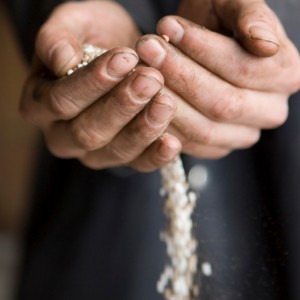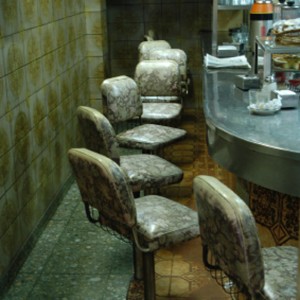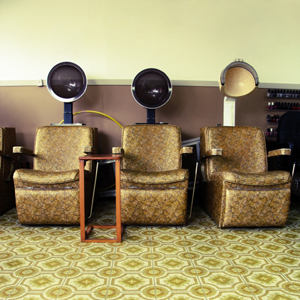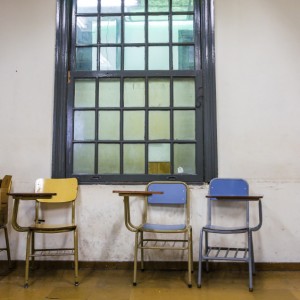You May Be A Victim of Asbestos Exposure
If you have mesothelioma, it’s probably because you had exposure to asbestos by working with or around asbestos-containing products, the Navy, or another commercial or industrial site. You also probably know where the exposure took place.
But what if you don’t? What if you have no idea where or how you were exposed?
The reason you might not know where it happened is because it was secondary exposure. Secondary exposure to asbestos can occur almost anywhere.
Anyone Can Be Affected by Asbestos
You may have suffered secondary exposure to asbestos if you are a:
- Homeowner
- Gardener
- Restaurant employee
- Barbershop and salon customer or employee
- Student
- Mass-transit rider or worker
- Community sports league player
Secondary exposure typically happens when someone else handles asbestos and becomes contaminated by it. Then, unknowingly, carries it into your home, workspace, social-gathering place or neighborhood.
Secondary exposure can occur because asbestos fibers float in the air like dust. Eventually, the fibers attach to things, including skin, hair and clothing. Disturbing the fibers causes them to refloat and settle someplace else or be inhaled by you, the American Cancer Society says.
Many Places Contain Asbestos
The risks of developing mesothelioma are generally lower for secondary exposure victims than for those who experience direct exposure. That is because secondary exposure is usually less intense and shorter than it is for those exposed directly.
However, the National Cancer Institute reports mesothelioma can be triggered after only brief contact with asbestos. For that reason the NCI considers asbestos exposure unsafe no matter how small the exposure.
There are many examples of how you might be secondarily exposed to asbestos without knowing it. Here are some of the more common ones.
Homeowners

Older homes made extensive use of asbestos. The material was added to walls, ceilings, floors, roofing, attic insulation, electrical wires, heating ducts, cement pipes and more.
An example of a secondary exposure risk is if you had to replace a water heater. It gets disconnected and carried out through your door. Along the way, it leaves behind a trail of asbestos dust. The plumber, too, leaves dust that got on him when disconnecting the tank.
Later, you would walk over the trail of dust. This stirs the fibers, they scatter into the air, and then possibly enter your lungs.
Also, any remodeling work would spew clouds of asbestos in all directions during the demolition or tear-out phase of the project.
Gardener

You want to grow flowers but may also have raised a cloud of asbestos dust. It happened when you poured into your soil a product called vermiculite, says the National Cancer Institute.
Vermiculite is a mined mineral. Gardeners have long used it to improve drainage and give roots more air to breathe. Unfortunately, in the past, some brands of vermiculite were found to be contaminated by quantities of asbestos.
Restaurant Employees

During lunch breaks, many people who work with and around asbestos patronize diners, fast-food places and cafeterias. They come direct from the job and normally do not have time to change out of their soiled clothing.
When they enter, they bring asbestos dust inside with them. Cooks, servers, hosts, hostesses, managers, dishwashers and other employees are as a result candidates for secondary exposure to asbestos.
Anyone in the restaurant industry who works with an older oven — especially in a pizzeria — may have been directly exposed to asbestos if they were there during renovations.
Barbershop and Salon Customers and Employees

Chances are, if you’ve been to a barbershop, you’ve been exposed to talcum powder. Although talc does not contain asbestos, it is often mined right near areas that contain asbestos. The powdery nature of talc means it is easy to inhale.
One of the most basic pieces of equipment in a hair salon is the hair dryer. Until fairly recently, asbestos was used in chair-mounted overhead dryers and in hand-held blow dryers to keep components from becoming dangerously hot.
Asbestos seldom stayed inside the dryers. Instead, it would end up on the chairs and floors. You possibly took some of it home along with your new style or cut.
Students

Older school buildings are just as bad as older offices when it comes to asbestos exposure, says the U.S. Dept of Health and Human Services’ Agency for Toxic Substances and Disease Registry. Students who spent significant time daily in a rundown schoolroom were probably exposed to asbestos.
The same would be true of school officials, teachers, aides, cafeteria workers, librarians, custodians and parental volunteers. In some cases, these individuals unwittingly carried asbestos fibers from the crumbling schools into homes, shops and other places.
Students and others who live at their schools, such as boarding school or college dorms, also may be affected by household exposure . If anyone they are living with has had direct contact with asbestos, they may end up being exposed.
Mass-Transit Riders and Workers

The person sitting next to you on the crowded bus or train is wearing dirty coveralls and carrying a metal lunchbox. It is likely that your fellow passenger works in a trade where he is exposed to asbestos.
It is also likely that some of the asbestos dust on his clothes will end up on yours by the time you get off — especially if you must brush past as you work your way to the exit.
Additional asbestos can be present if transit-authority mechanics who worked on the vehicles’ brakes happened to step inside. Brakes produce large amounts of asbestos dust.
Some of that dust will drop onto a mechanic’s clothes as he removes brake components for repair. And it comes off him when he enters the vehicle. It gets onto you when you board.
Community Sports League Players

The possibility of secondary exposure to asbestos exists practically any time a group of people come together to play sports in a community league. The sport could be softball, soccer, bowling or something else entirely.
The risk exists because asbestos workers often come to games directly from the job, bringing asbestos dust with them. The dust is unintentionally shared among the other members of the team and even among players from the visiting squad as the opposing sides interact.
In the closed quarters of a bowling alley, spectators and lane personnel can inhale asbestos dust shed by the bowlers.
Improve Your Chances of Survival
Contact with asbestos can come in the form of direct or secondary exposure. If you suspect you may have been exposed, contact a doctor immediately and arrange for a mesothelioma examination. The key to mesothelioma survival is early detection and early treatment.







